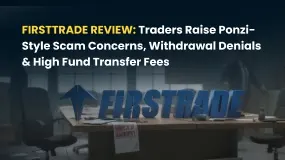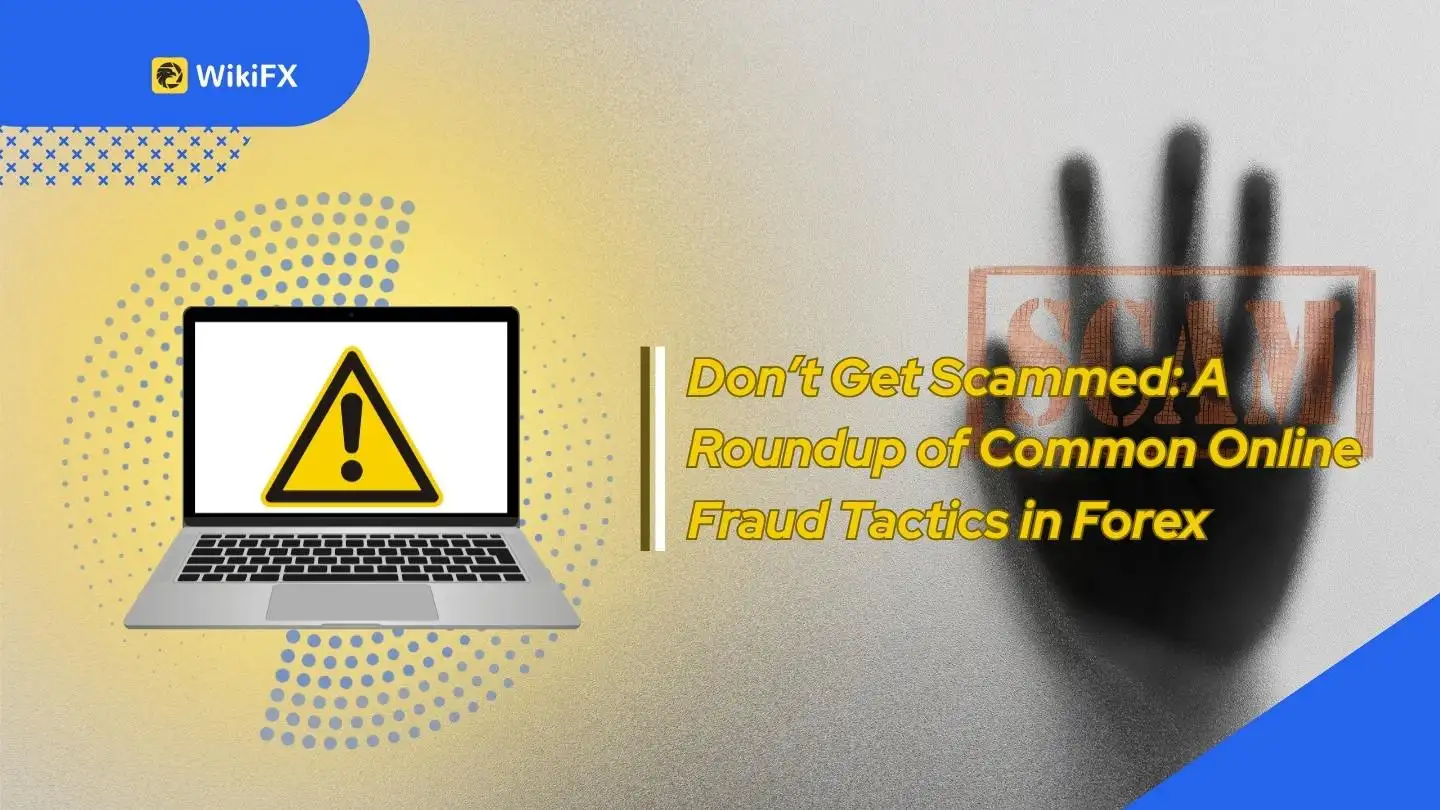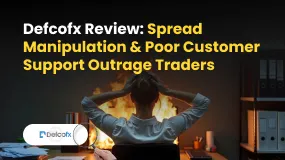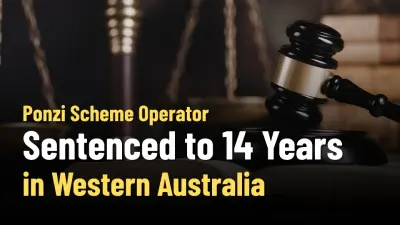简体中文
繁體中文
English
Pусский
日本語
ภาษาไทย
Tiếng Việt
Bahasa Indonesia
Español
हिन्दी
Filippiiniläinen
Français
Deutsch
Português
Türkçe
한국어
العربية
Cloned Layouts, Fake Reviews: A Closer Look at Two Scam Network Cases
Abstract:Identical websites, different names—same scam. See how fraudsters are cloning trading platforms and fabricating 5-star reviews to lure investors.

In the world of online trading fraud, deception has become less about novelty and more about repetition. The platforms may change names, but the tactics remain strikingly consistent. Two recent examples—Victorian Money Limited & GreenHillCAI, and a trio of AI-branded platforms (Miradex Trader, OptiTrader AI, and Novarix Trader 3.9 Flex)—highlight how scammers are leveraging cloned websites, fake endorsements, and misleading visuals to create the illusion of legitimacy.
Case 1: Identical Sites, Identical Scams — Victorian-FX & GreenHillCAI
At first glance, victorian-fx.pro and greenhillcai.com appear to be different brands. But in reality, they are identical in structure, visuals, and text, right down to the dashboard screenshots, layout, and even the so-called “analytics.”


The same color palette, marketing lines (“Our Fund, Your Profit”) and fake payout panels are reused across both domains—without changing anything other than the logo and company name. There‘s no effort to hide the replication because the creators likely assume users won’t visit both sites.
Crucially, both websites have been flagged by BaFin, Germanys financial watchdog, for operating without authorization. This means neither platform holds a valid license to offer financial or investment services to German clients—or anyone in the EU.
This is not a case of imitation. Its a deliberate, coordinated scam network, reusing the same site infrastructure under different names to trap as many users as possible before being shut down.
Case 2: Fake Ratings, Fabricated Endorsements — Miradex, OptiTrader AI, Novarix
The second group of platforms—miradextrader.pro, optitraderia.pro, and novarixtrader39flex.pro—takes deception a step further by creating entire review pages within their own websites, designed to mimic third-party assessments.



Each of these websites hosts a nearly identical “broker review” layout. Features include:
- A 97% “Excellent” rating badge
- Professionally formatted breakdowns of “Pros and Cons”
- Generic user quotes with no verifiable source
- Text blocks that appear informative but offer no meaningful content or transparency
The illusion is that these sites have been vetted by external experts. But the reality is that all reviews are self-published and identical, merely swapping the platform name (as revealed by inspecting the page source and repeated design elements).
More alarmingly, several statements present factual contradictions. For example:
“This broker is licensed by CySEC and allows anonymous trading.”
This is simply impossible. CySEC (Cyprus Securities and Exchange Commission) strictly prohibits anonymous accounts and requires full KYC compliance. Such claims are not just misleading—they directly contradict known regulatory standards.
How to Spot Patterns
These two scam networks rely on the same blueprint:
- Duplicate websites under different names
- Fake dashboard stats and investor payout panels
- Self-created rating systems passed off as external reviews
- Fraudulent claims of licensing or regulation
- Use of phrases like “Funding Promising Traders” or “Join Our Community” with no real contact or support
They also often provide MetaTrader login screens, but no actual brokerage back-end—just superficial interface elements meant to look “familiar.”
Conclusion: Dont Trust What You See — Verify
What these cases prove is that professional-looking websites mean very little in the age of digital fraud. The most dangerous scams now look polished, come with fake reviews, and even reference non-existent regulators or cloned companies.
To stay safe:
- Use third-party verification tools such as WikiFX to assess broker transparency and user complaints
- Be wary of platforms with identical designs or fake review systems embedded into their own sites
If a website feels too slick to be real—it probably isnt.
Disclaimer:
The views in this article only represent the author's personal views, and do not constitute investment advice on this platform. This platform does not guarantee the accuracy, completeness and timeliness of the information in the article, and will not be liable for any loss caused by the use of or reliance on the information in the article.
Read more

Firsttrade Review: Traders Raise Ponzi-Style Scam Concerns, Withdrawal Denials & More Issues
Have you lost all your capital while trading via Firsttrade? Does the US-based forex broker disallow you from withdrawing funds? Do you have to pay massive fees when transferring funds? Does your trade get affected because of frequent malfunction in the trading app? These have been haunting many traders at Firsttrade. Consequently, many of them have raised complaints online. In this Firsttrade review, we have shared such complaints. Keep reading to know about them.

Don’t Get Scammed: A Roundup of Common Online Fraud Tactics in Forex
Forex scams are evolving faster than ever; learn the most common tactics (cloned platforms, fake investment managers, fake recovery services) and how to spot them before you deposit.

Defcofx Review: Spread Manipulation & Poor Customer Support Outrage Traders
Does the poor customer support service leave you stunned when trading via Defcofx? Do you receive blunt, negative responses from the support team on several trading queries? Does the Saint Lucia-based forex broker pile on the losses for you by manipulating forex spread charges? In this Defcofx review, we have shared some complaints made against the broker. This will further answer your question: Is Defcofx real or fake?

Ponzi Scheme Operator Sentenced to 14 Years in Western Australia
Chris Marco, a Ponzi scheme operator, was sentenced to 14 years for a $34 million investment fraud in Western Australia. Read about the case and its impact.
WikiFX Broker
Latest News
How to Add and Take Out Money from Amillex Broker: A Complete Guide
FCA warning: These Firms are on the list
Ponzi Scheme Operator Sentenced to 14 Years in Western Australia
Dubai VARA Warns Against Vesta Investments
Don’t Get Scammed: A Roundup of Common Online Fraud Tactics in Forex
T4Trade broker Review 2025: Is T4Trade Regulated?
Chicago PMI Beats But Remains In 'Contraction' For Second Straught Year
MH Markets Overview: Fees, Platforms, and Regulation
Is MultiBank Group Legit or Scam? A 2025 Regulation Review
Firsttrade Review: Traders Raise Ponzi-Style Scam Concerns, Withdrawal Denials & More Issues
Currency Calculator



